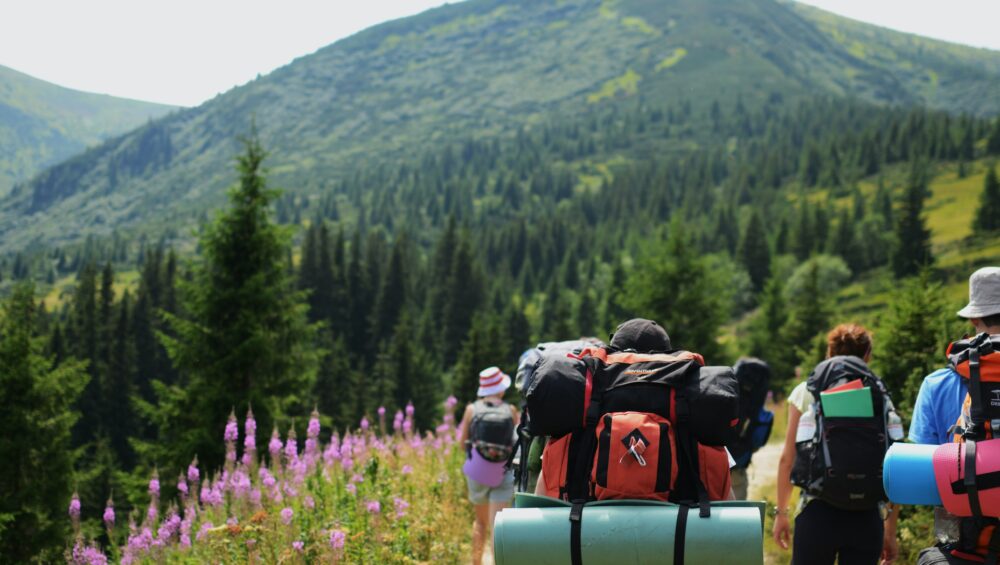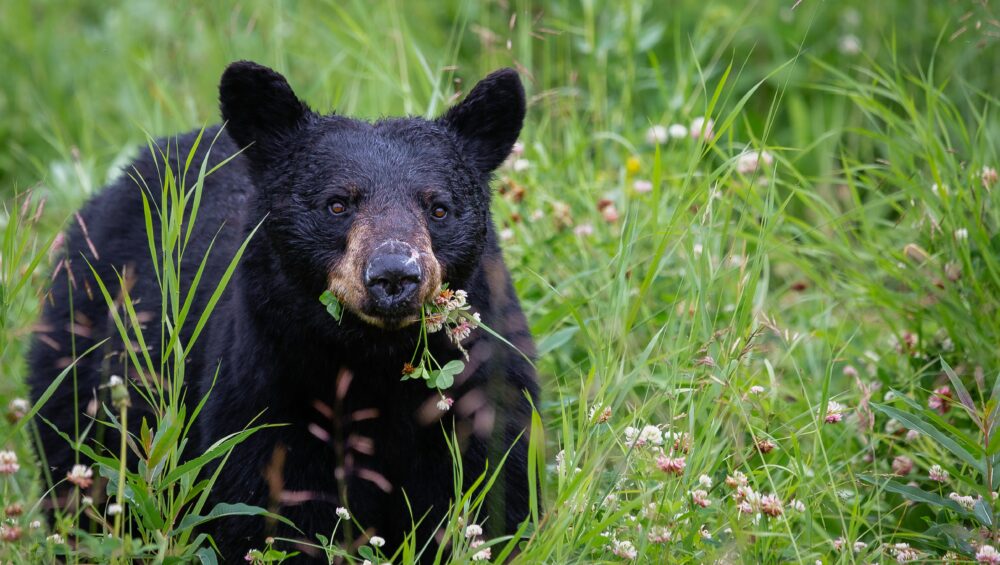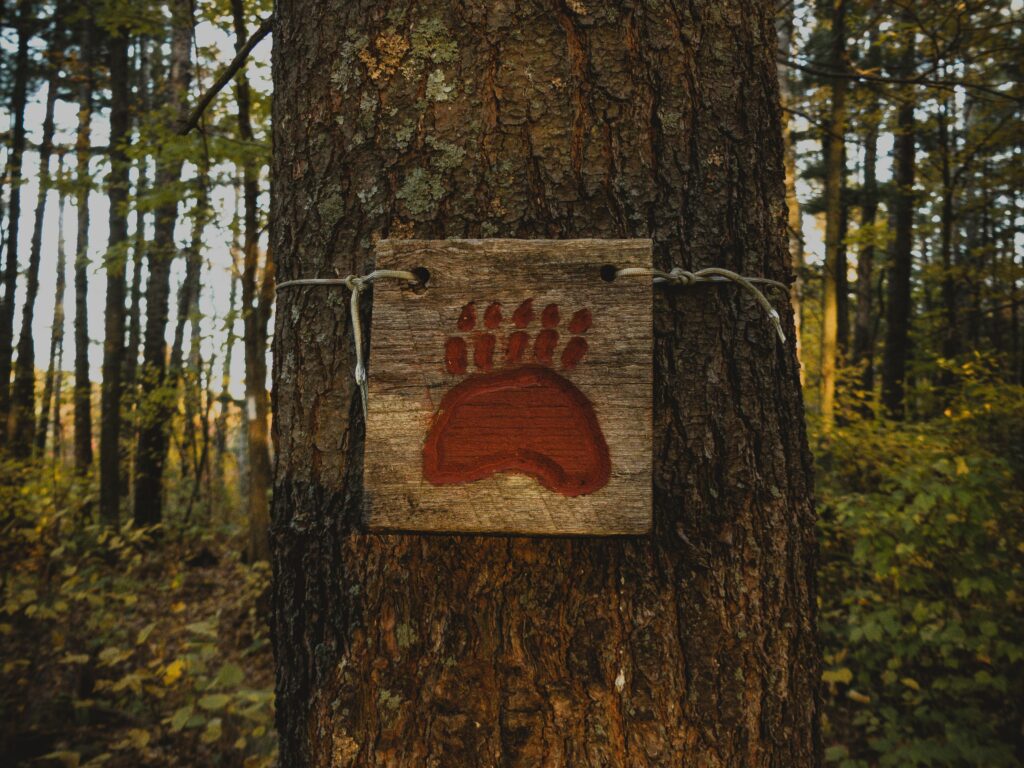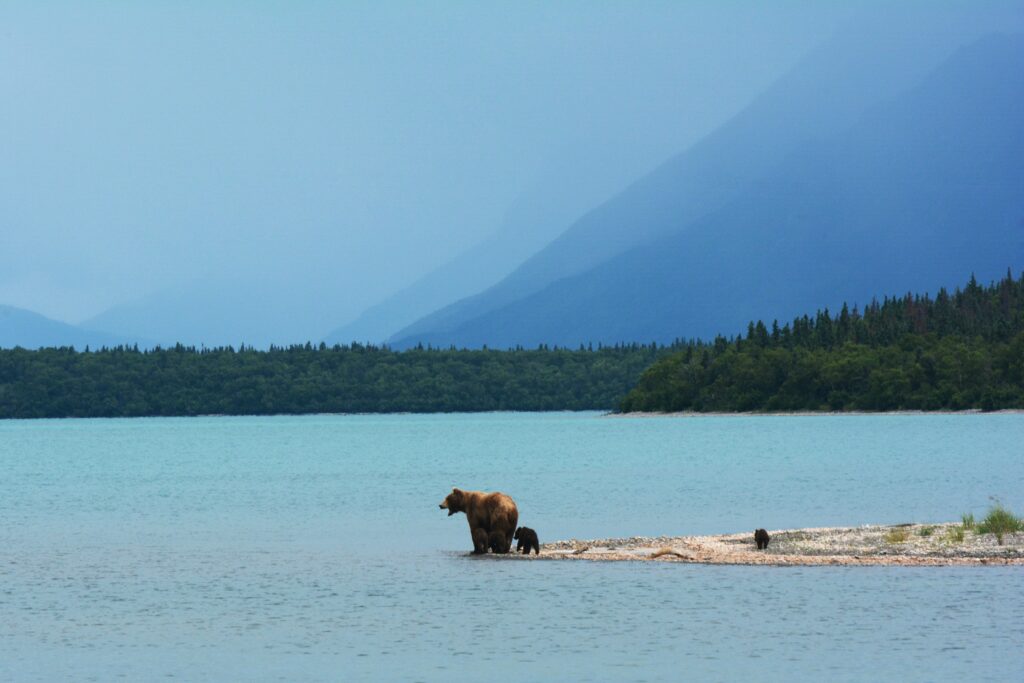Are you hoping to enjoy the summer weather on some hiking trails? If you are new to hiking, there are a few things you should know before you go. Hiking etiquette is one way to ensure safety on hiking trails, and these introductory tips will help you negotiate with any other hikers you may encounter on your journey.
Right of Way
The most important part of trail etiquette to keep in mind is the principle of Right of Way. Right of Way on a trail dictates who should yield and let others pass. Not only is Right of Way about being respectful and friendly, but it is also about keeping the trail safe for everyone.
The three main groups you might encounter on a hiking trail are hikers, bikers, and horseback riders. (In winter weather, you may also find cross-country skiers, snowshoers, or snowmobile riders, and you can read more about snowy trail etiquette here.)
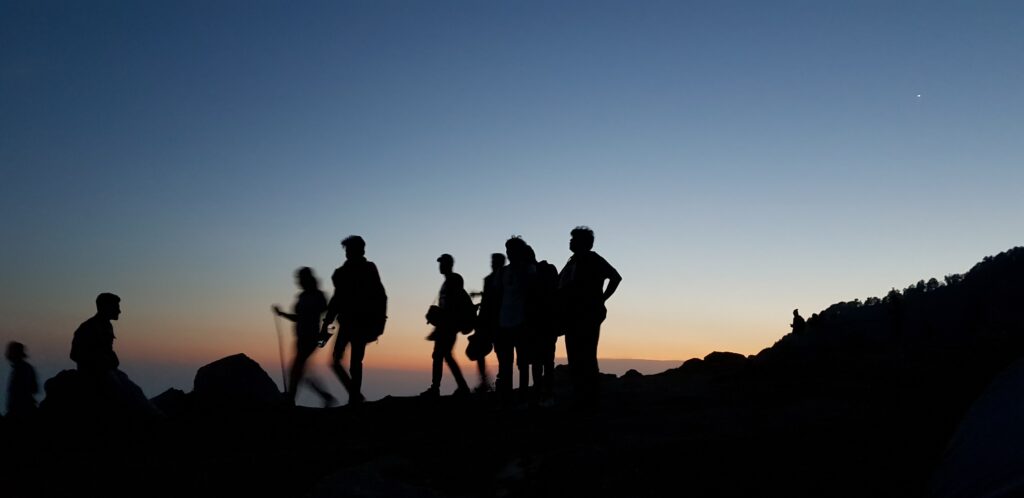
Trail Etiquette around Horses
It is important for everyone to always yield to horses and other pack animals, as they can scare easily. If you encounter a horseback rider on your hike, step to the side to give the animal plenty of room to pass on the trail. Let the rider know of your presence as early as possible, and follow their lead since they know their animal best.
Trail Etiquette Near Mountain Bikers
Bikers yield to both hikers and horseback riders. Bicyclists need to be aware of their surroundings at all times, bike within their abilities, and keep control of their bikes around hikers. That said, one rule of hiking etiquette is to be aware of the trail you are on. There are mixed-use trails and trails specifically for mountain bikers, e-bikers, etc. If you find yourself accidentally hiking on a single-track mountain biking trail, you need to be careful to avoid causing a collision.
Trail Etiquette with Other Hikers
Finally, there are suggested rules with regard to Right of Way between two hikers. Downhill hikers should always yield to uphill hikers. This rule is kind to those hiking up a hill in order to allow them to keep their momentum. It is easier for downhill hikers to stop and move to the side. Finally, I try to always yield to hikers with dogs or small children in order to avoid separating a group or causing confusion.
Passing on the Trail
Another rule of trail etiquette suggests the best way for hikers to pass others on the trail. As noted, providing other hikers advance notice of your presence is the best way to avoid an accident. It is also a good way to create a friendly environment for everyone to enjoy nature. Horses and pets may scare easily, so letting owners know you are coming upon them is important for everyone’s safety.
If the trail is wide enough, you can simply announce that you are passing on whichever side, similar to biking etiquette. If you are hiking on a narrow trail or the group in front of you is large, you may need to ask “May I pass” and wait for the group to move.
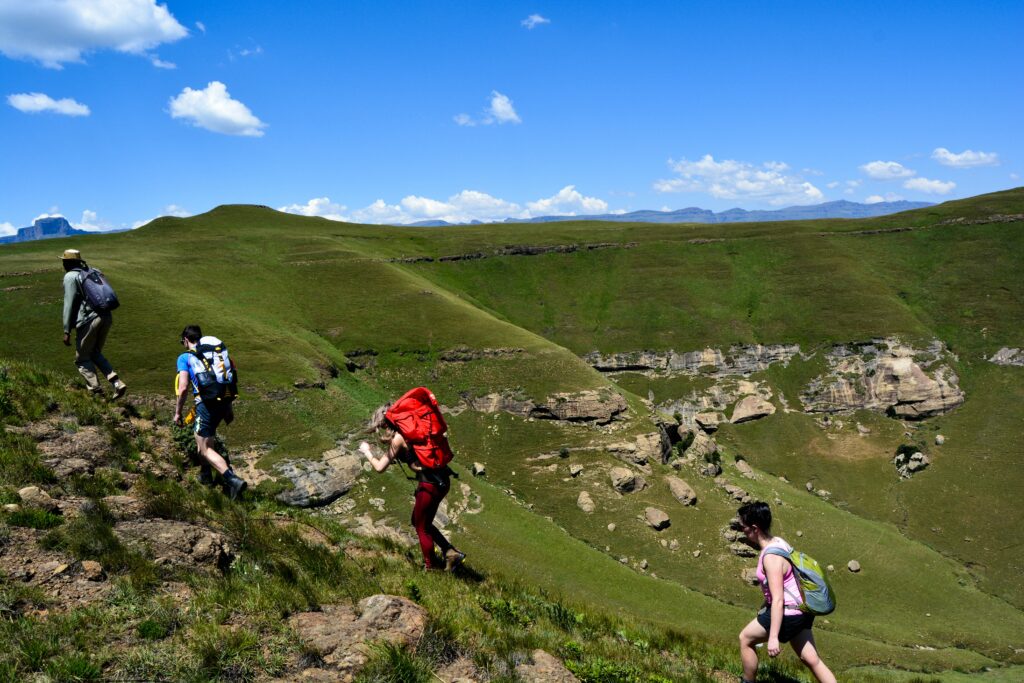
Leave No Trace Principles
When yielding space to others on a hiking trail, you want to keep the principles of Leave No Trace in mind. It is always preferred for hikers to stay on the trail when possible in order to preserve the surrounding landscape. If you see other hikers coming, especially coming up a hill, you can choose the widest spot on the trail and step aside early. If you need to step off-trail, avoid stepping on fragile foliage or wildflowers. Find the most durable surface, like a rock, to step on instead.
Trail Etiquette for the Trail
Leave No Trace means protecting nature and minimizing human impacts. Look at the trail conditions before you leave, and if you see that it is wet and muddy, consider rescheduling your hike. Choosing to continue in suboptimal conditions could be dangerous and can easily damage the trail. Sometimes hiking etiquette means being respectful of nature and finding a different place to hike.
Hiking with Kids
Taking the little ones hiking is a great way to introduce them to nature and get some exercise. If you are wondering if you can take kids hiking, I believe you absolutely should! That said, don’t forget to teach them these important rules of trail etiquette. It is essential for children’s safety that they yield properly to horseback riders.
It is also important to teach your kids to be good stewards of the land. Teaching Leave No Trace principles to your children on hiking trips will help them learn early how to respect nature and take care of our planet. Make sure your little ones know that yielding off-trail does not give them free rein to trample the surrounding landscape. Keep kids within trail boundaries, and make sure they know to leave nature intact.
Hiking with Pets
Like most dogs, your furry friend probably enjoys joining you on the trail. If you plan to bring your pet on your next hike, there are a few other trail etiquette rules you should keep in mind. First, in most instances, you should keep your dog on a leash. Unless you are in a specifically designated no-leash area, this is best for everyone’s safety. If your dog happens upon a biker, it could easily cause an accident. Dogs and their barking can also startle horses easily. Therefore, keep your dog close to be respectful to all other trail users.
Next, try to keep your dog’s barking to a minimum. This is easier said than done, but hikers love the peace and quiet of nature, and barking can disturb both wildlife and other visitors. Finally, keep your dog close to the trail. This Leave No Trace principle applies to humans and pets alike. You do not want your dog eating random plants, and hikers do not want to find their surroundings trampled, dug up, or destroyed. Train your dog to be a good hiking companion, and you will ensure a safe and enjoyable experience for everyone.
Final Thoughts
Hiking etiquette is about respect for others and respect for nature. It is also about safety. Most hikers know the Right of Way protocols, and they will be expecting you to behave accordingly. Being friendly and courteous on the trail will foster a safe and pleasant atmosphere on your hike.

